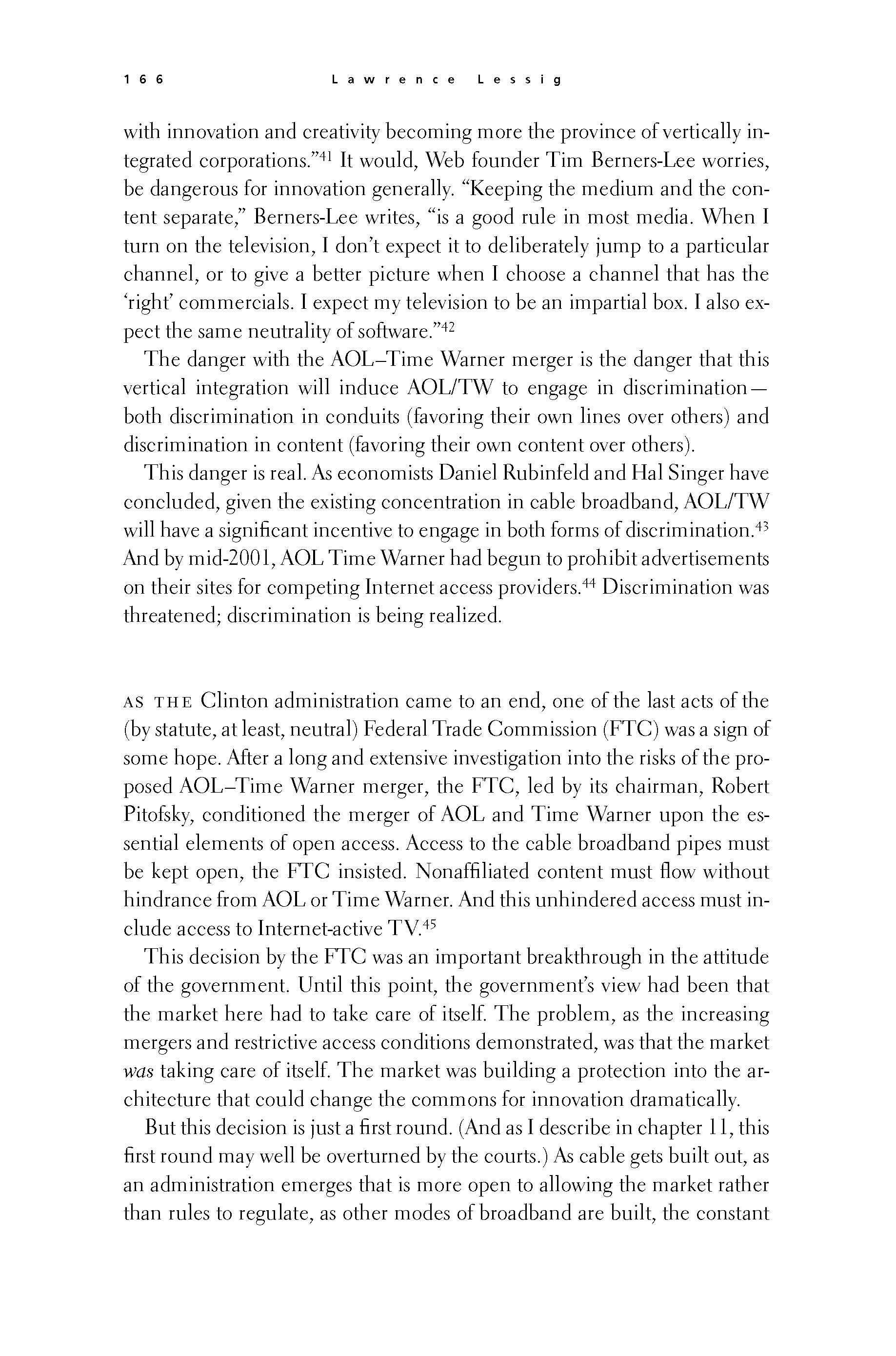 p165 _
-chap- _
toc-1 _
p166w _
toc-2 _
+chap+ _
p167
p165 _
-chap- _
toc-1 _
p166w _
toc-2 _
+chap+ _
p167
with innovation and creativity becoming more the province of vertically in-
tegrated corporations."[10-41] It would, Web founder Tim Berners-Lee worries,
be dangerous for innovation generally. "Keeping the medium and the con-
tent separate," Berners-Lee writes, "is a good rule in most media. When I
turn on the television, I don't expect it to deliberately jump to a particular
channel, or to give a better picture when I choose a channel that has the
'right' commercials. I expect my television to be an impartial box. I also ex-
pect the same neutrality of software."[10-42]
The danger with the AOL-Time Warner merger is the danger that this
vertical integration will induce AOL/TW to engage in discrimination --
both discrimination in conduits (favoring their own lines over others) and
discrimination in content (favoring their own content over others).
This danger is real. As economists Daniel Rubinfeld and Hal Singer have
concluded, given the existing concentration in cable broadband, AOL/TW
will have a significant incentive to engage in both forms of discrimination.[10-43]
And by mid-2001, AOL Time Warner had begun to prohibit advertisements
on their sites for competing Internet access providers.[10-44] Discrimination was
threatened; discrimination is being realized.
///\\\
As the Clinton administration came to an end, one of the last acts of the
(by statute, at least, neutral) Federal Trade Commission (FTC) was a sign of
some hope. After a long and extensive investigation into the risks of the pro-
posed AOL-Time Warner merger, the FTC, led by its chairman, Robert
Pitofsky, conditioned the merger of AOL and Time Warner upon the es-
sential elements of open access. Access to the cable broadband pipes must
be kept open, the FTC insisted. Nonaffiliated content must flow without
hindrance from AOL or Time Warner. And this unhindered access must in-
clude access to Internet-active TV.[10-45]
This decision by the FTC was an important breakthrough in the attitude
of the government. Until this point, the government's view had been that
the market here had to take care of itself. The problem, as the increasing
mergers and restrictive access conditions demonstrated, was that the market
_was_ taking care of itself. The market was building a protection into the ar-
chitecture that could change the commons for innovation dramatically.
But this decision is just a first round. (And as I describe in Chapter 11, this
first round may well be overturned by the courts.) As cable gets built out, as
an administration emerges that is more open to allowing the market rather
than rules to regulate, as other modes of broadband are built, the constant
[[166]]
p165 _
-chap- _
toc-1 _
p166w _
toc-2 _
+chap+ _
p167